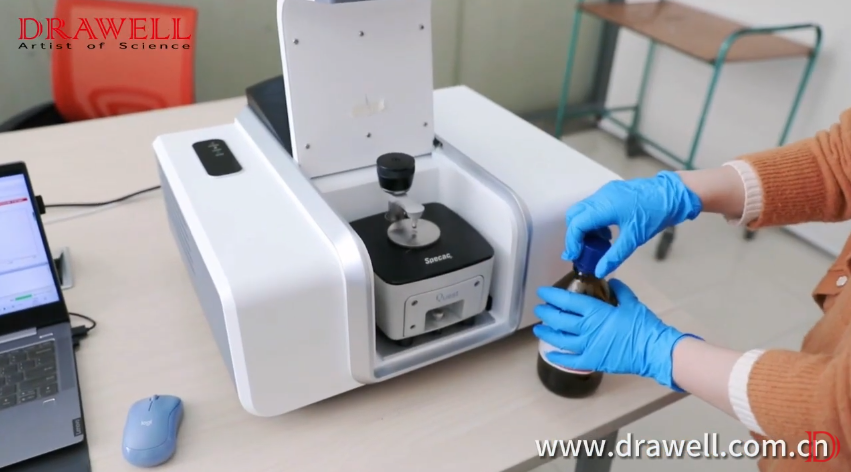In the field of analytical chemistry, an atomic absorption spectrometer, which is also abbreviated as an AAS, is considered to be one of the most helpful pieces of laboratory equipment. Atomic absorption spectrometers, or AASs, are instruments that enable precise and accurate measurements to be taken of trace elements. These spectrometers are also known as atomic absorption spectrometers. The principle that atoms absorb light, which is applicable to a wide variety of scientific fields and offers valuable insights into those fields, is what is used to achieve this goal. This principle allows for the accomplishment of many other scientific goals as well. Title List1. The Idea Behind Atomic Absorption Spectrometry, Broken Down to Its Bare Essentials2. 2. The Wide Range of Possible Applications That It Could Have3. An Example of Adaptability and Productivity in the Working Environment1. The Idea Behind Atomic Absorption Spectrometry, Broken Down to Its Bare EssentialsThe Beer-Lambert Law is the name of the theory that underpins the practice of atomic absorption spectrometry. The concentration of an analyte is directly proportional to the amount of light that it absorbs as light travels through a sample, according to this law, which states that the concentration of an analyte is directly proportional to the amount of light that it absorbs.

This theory forms the foundation of a technique called atomic absorption spectrometry
1. The method makes use of the specific absorption properties of atoms, which enables the detection as well as the quantitative analysis of specific elements that are present in a given sample
2. The method also makes it possible to analyze the amount of these elements
3. In addition to that, the method makes use of the unique absorption properties that electrons possess
2. A Huge Number of Different Applications That Could Be Made Use OfBecause of its adaptability, the atomic absorption spectrophotometer is an instrument that is necessary for research in a wide variety of subfields. Let us investigate some of the most significant areas in which the AAS demonstrates its significance. Some of these areas include the following:- Studies on the Environment and Related Investigations:The atomic absorption spectrometer, also known as an AAS, is an essential piece of laboratory equipment that must be used when analyzing samples of soil, water, and air to determine the presence of heavy metals and other chemicals that may be hazardous to a person's health. This information is necessary for determining whether or not the regulatory requirements are being met, as well as for monitoring the amount of pollution that is being released into the environment. In addition, this information is necessary for determining whether or not the regulatory requirements are being met. It makes accurate elemental analysis possible, which, in turn, improves the overall quality of pharmaceuticals in terms of both their effectiveness and their safety.- Forensic Science: The AAS is a helpful tool for forensic scientists in the process of identifying and analyzing trace elements that can be found in samples.
This can be done through the forensic scientists' use of samples. To a greater or lesser extent, this is beneficial to both the gathering of scientific evidence and the carrying out of criminal investigations. Researchers are able to determine the elemental make-up of a wide variety of materials using a method called atomic absorption spectroscopy, which is also referred to as AAS. These materials include polymers, ceramics, metals, and alloys.
3. an extremely high degree of sensitivity in conjunction with an outstanding degree of accuracyBecause atomic absorption ftir spectrophotometer possesses a high degree of sensitivity, it is possible to detect and quantify trace elements at concentrations as low as parts per billion (ppb) or even parts per trillion (ppt). This is possible because of the high degree of sensitivity that atomic absorption ftir spectrophotometer possesses. Because of this property, AAS is a very useful analytical tool, particularly when working with samples that contain only trace amounts of the elements of interest that are being studied. This is especially true when working with samples that are being analyzed in a laboratory setting. A Real-World Example of How Adaptability and Efficiency Can Work TogetherThe AAS allows for a great deal of flexibility in terms of the sample preparation process because it can analyze samples in all three states (solid, liquid, and gas). The vast majority of the time, liquid samples are analyzed by either sucking them into the spectrometer or introducing them into the instrument with the assistance of a nebulizer. On the other hand, the instrument is designed to accept gaseous samples that are brought in directly. The cost in comparison to both the level of performance and the level of simplicity of operation:Atomic absorption ftir spectrophotometer provides a solution that is not only more cost-effective than other complex methods of analysis, but also more precise and reliable, all without compromising on either of these aspects, which is an advantage when compared to other complex methods of analysis.
Because this gas chromatography machine is readily available, a greater variety of users are now able to make use of the atomic absorption spectrometer (AAS). These users come from a wide variety of settings, including academic institutions, research laboratories, and industrial environments, to name a few. This was as a result of the fact that it made it possible for researchers to determine the elemental make-up of a wide variety of different substances with an accuracy and sensitivity that had never been seen before. The atomic absorption spectrometer, which is more commonly known as an AAS, will without a doubt continue to play an essential role in the process of elucidating the mysteries surrounding elemental analysis, thereby making significant contributions to the development of science, industry, and environmental protection.

